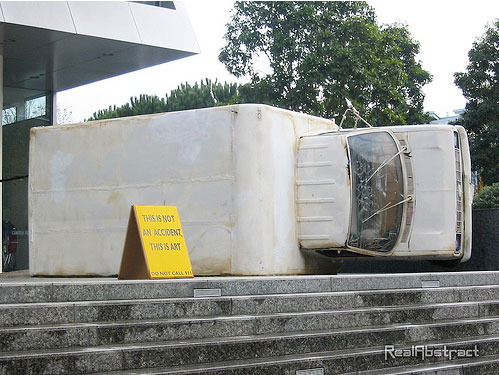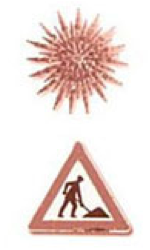“We all make choices, but in the end, our choices make us.”
– Andrew Ryan (2007), “Intro to Rapture”,
fictional character from the game “Bioshock”, 2K Games 2007
We, our society and our education, depend on media. We are connected to each other and other generations by thin strands of ‘natural’ or artificial/technical media – the differentiation is not an easy one – which may change in their use, usability and prominence over time. Media are in a complex way interwoven educationally, socially, culturally, economically, politically; they enable and establish important ideas of what knowledge, society, culture etc. would, could or should be (see e.g. the Technological Singularity proponents, or the german Post Privacy Movement).
Each established medium stands at any specific moment for a space of possibilities of understanding and acting, defined by ‘soft’ expectations (e.g. genres, usability traditions, clichés, cultural needs) and ‘hard’ technical restrictions. Media, culture and society are interconnected in their evolutionary development, and, like in a branching evolutionary tree, show extinctions, endemic constancy or epidemic spread – with a subtle impact on how we treat information; on how we generate, archive, order or exchange it through the ages.
Pedagogical Media Theory is a (german) approach to connect education and “Bildung” (a specific german concept of ‘maturity’, see the ‘talk’ for its background) with technological developments and a broad concept of medium. Since an ongoing discussion about education and ‘new’ media (e.g. “Scripture”, “Print”, “Language Labs”, “TV” or “Internet”) seem to suggest that these two areas could be cleanly separated, Pedagogical Media Theory argues that education, media use and culture are inseparably connected, and that media itself would shape education, even to the hidden curriculum of how, why and what should be learned, known or transfered.
A society based on oral communications would differ from one with scripture, which differ from one with letter printing, which differ from one with electronic data processing. So, how is the media in use today influencing our culture and our education, and vice versa? Does the introduction of the ‘new’ digital-networked medium differ from former medial revolutions and evolutions? What would be the role of the teacher, if her task is to prepare pupils for an extremely fast changing (medial) world ten years in their future, while her own edcuation happened ten years in the past? Is there something when we ‘observe’ media that does not change over time – including the possible conceptual instruments for observations?
Pedagogical Media Theory, as being part of our culture, thus resembles this:
Pedagogical Media Theory takes – from my personal point of view – a comparative look at ‘new’, ‘old’ and ‘future’ media as part of the human environment, try to assess their similarities; their influence on learning, teaching, archiving, communication and transmission of inter-generational knowledge; and how we can perceive and shape this process. This is no easy task, since we are in “prisons without walls” (McLuhan (1964), 28): Well established media are usually invisible – you could say they have a 100% usability, or that we are ‘made’ out of media. They shape the instruments, which are for social sciences and humanities mostly language-based ones, the very instruments by which we try to take a look at media.
So, for practice and theory, we need more than one perspective on media and education, provided by historic views, by art, by medium design, by transferring (content) between media.
“(…) to someone, whose only tool is a hammer, every problem looks like a nail.”
– Edsger Dijkstra (1976) “The pragmatic engineer versus the scientific designer.”
The practical side of Pedagogical Media Theory may look like this:
Text to read:
Heinz von Foerster’s text will set the mood for this course. He briefly explains the rationale behind any mode of cognition, any preoccupation on how individuals or societies handle knowledge and its legitimation: Playing by the rules as best, efficient and innovative as we can; and/or perceive the rules as something man-made and potentially changeable/changing, something that determines the way we play.
- Heinz von Foerster (1991): Paragraph “Metaphysics” in “Ethics and second-order cybernetics” [XXX] (Can also be found as single paragraph in the Dropbox)
Task:
Is the question “Is this a decidable or undecidable question?” itself a decidable question?
Task:
From von Foerster’s perspective, what would be a possible difference between an advertiser or demagogue to a designer or teacher? After all, they all try to influence how and what their target group is thinking?
A society in (educational) turmoil
How can we train future teachers, what kind of knowledge do they need for their job, when society seems to change in its problems and its categories of problems within less than a generation?
[youtube]http://www.youtube.com/watch?v=pMcfrLYDm2U[/youtube]
- Karl Fisch, Scott McLeod (2008) “Shift Happens” (Video) [XX]
Task:
What may be the implications of Fisch & McLeod’s video on change for your area of work – and for educators? This specific video has been very successfull among educators (Karl Fisch is himself a middle- and highschool teacher) – why?
[youtube]http://www.youtube.com/watch?v=zDZFcDGpL4U[/youtube]
- RSA Animate (2010): “Ken Robinson: Changing Education Paradigms” (Video) [XX]
“A high school teacher drew a dot on the blackboard and asked the class what it was. “A chalk dot on the blackboard,” was the only response. “I’m surprised at you,” the teacher said. “I did this exercise with a group of kindergartners and they thought of fifty different things it could be: an owl’s eye, a squashed bug, a cow’s head. They had their imaginations in high gear.”
As Picasso put it, “Every child is an artist. The challenge is to remain an artist after you grow up.””
– From the “Creative WhackPack”-Card “Think like a kid”
Compare Ken Robinson’s recent speech with this quote from the 60ies (omitted the name of the main medium for effect):
“There is a world of difference between the modern home environment of integrated electric information and the classroom. Today’s (…) child is attuned to up-to-the-minute “adult” news — inflation, rioting, war, taxes, crime, bathing beauties — and is bewildered when he enters the nineteenth-century environment that still characterizes the educational establishment where information is scarce but ordered and structured by fragmented, classified patterns, subjects, and schedules. It is naturally an environment much like any factory set-up with its inventories and assembly lines. (…)
Today’s child is growing up absurd, because he lives in two worlds, and neither of them inclines him to grow up. Growing up — that is our new work, and it is total. Mere instruction will not suffice.”
– Marshall Mcluhan and Quentin Fiore (1967), “The Medium is the Massage” (sic).
Text to read
Torsten Meyer is one of the founders of the ePedagogy Design – Visual Knowledge Building M.A. study. He blends arts, media theory and education in a unique style of using metaphors, symbols and images to represent aspects of media that are hard to grasp. This style was formative for the Hamburgian approach to the MA. In this text he uses symbolic imagery to connect medial and educational aspects (the imagery he explains can be found below, and also on the book cover).
- Torsten Meyer (2007), “Education within a new medium”
You can omit reading the paragraph “Spacing and Framing: On the Archi- and Datatecture of the Book”. (can be found in the Dropbox) [XXX]
Aspects of medium: Formation of dancers, a fish, a pipe, an under-construction-sign, a file folder, a standardized freight container.
Task:
It has become a biannual tradition in Hamburg – some years after Torsten Meyer went to Cologne – to find new symbols, new imagery for the workings and caveats of new media and its recent developments (you can find a list here, though the texts are only in german; maybe you can guess what they represent?).
Find a symbolic representation of a specific medial aspect that you think is important for you or society or education, and describe it.
Text to read:
Christina Schwalbe, one of the first students to complete the M.A. in 2006, describes in “Mashup Cultures” the connection between the influental, leading medium of past and present societies and its impact on the perception and legitimation of knowledge in higher education.
- Christina Schwalbe (2010): “Change of Media, Change of Scholarship, Change of University: Transition from the Graphosphere to a Digital Mediosphere.” (can be found in the Dropbox) [XXX]
Task:
Can you imagine – or do you know – a culture, that has taken a different path to communication, archiving, inter-generational transmission of knowledge than ours? Is there a ‘school’, and how would it look like? How would education, vocational training or assessment of knowledge take place in a society where the leading technical and cultural medium would be, e.g. face-to-face roleplaying games? Try to imagine a culture based upon a specific main medium.
Task:
How does a networked-digital medium differ from other media, like radio, print, TV, language?






Pingback: Notes on the chat-session from May 23rd | Shaping Media | Pedagogical Media Theory